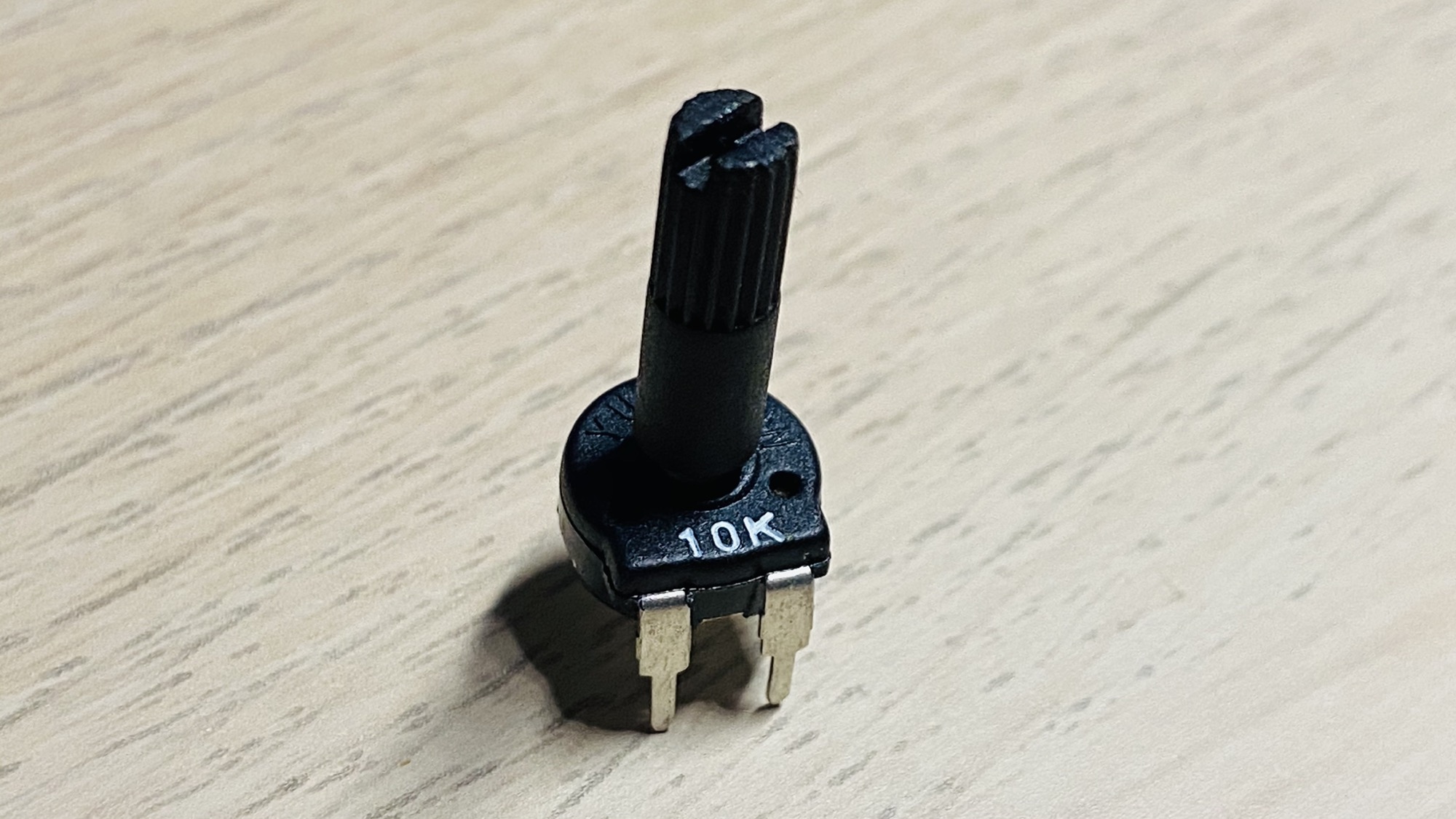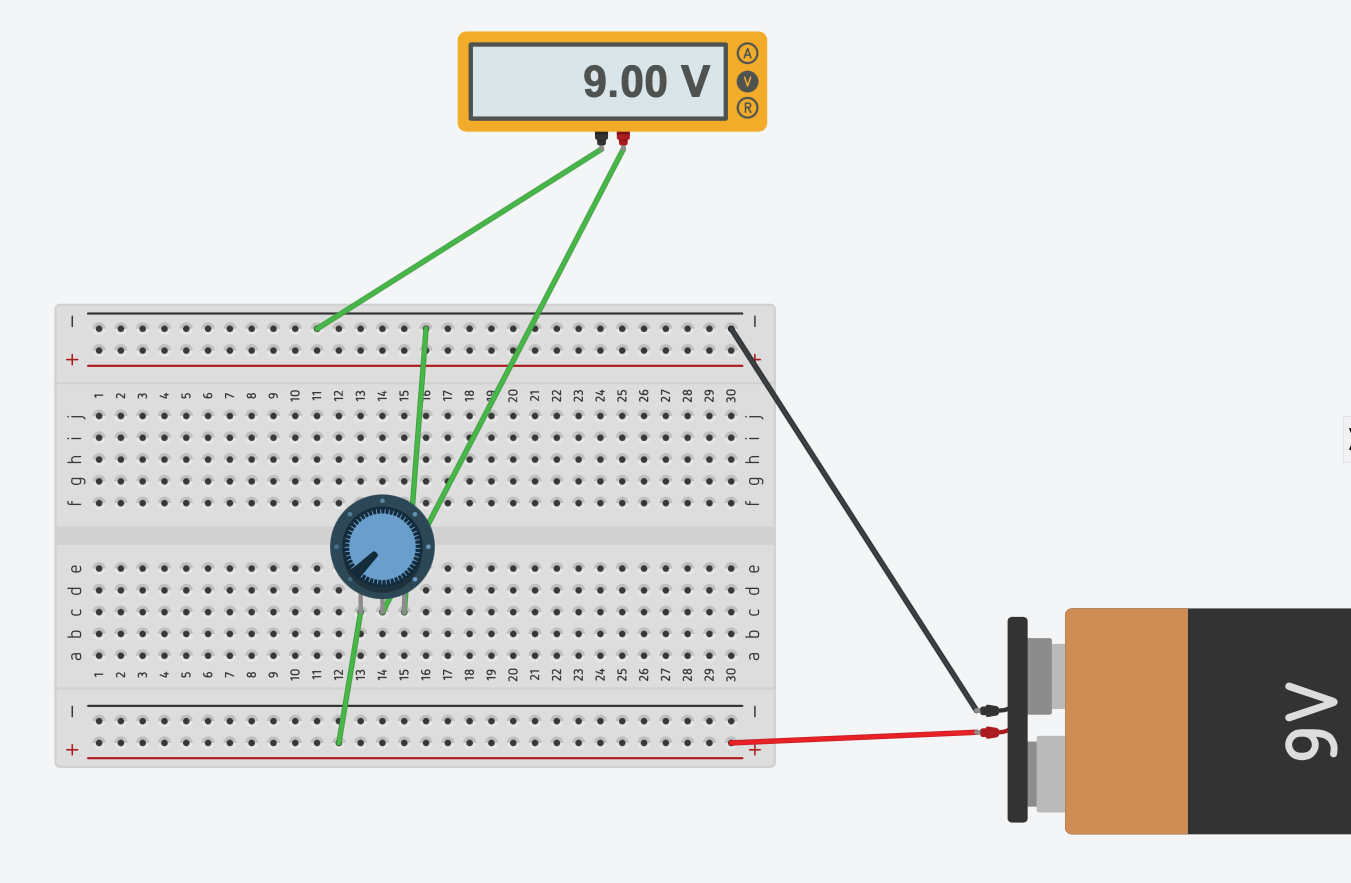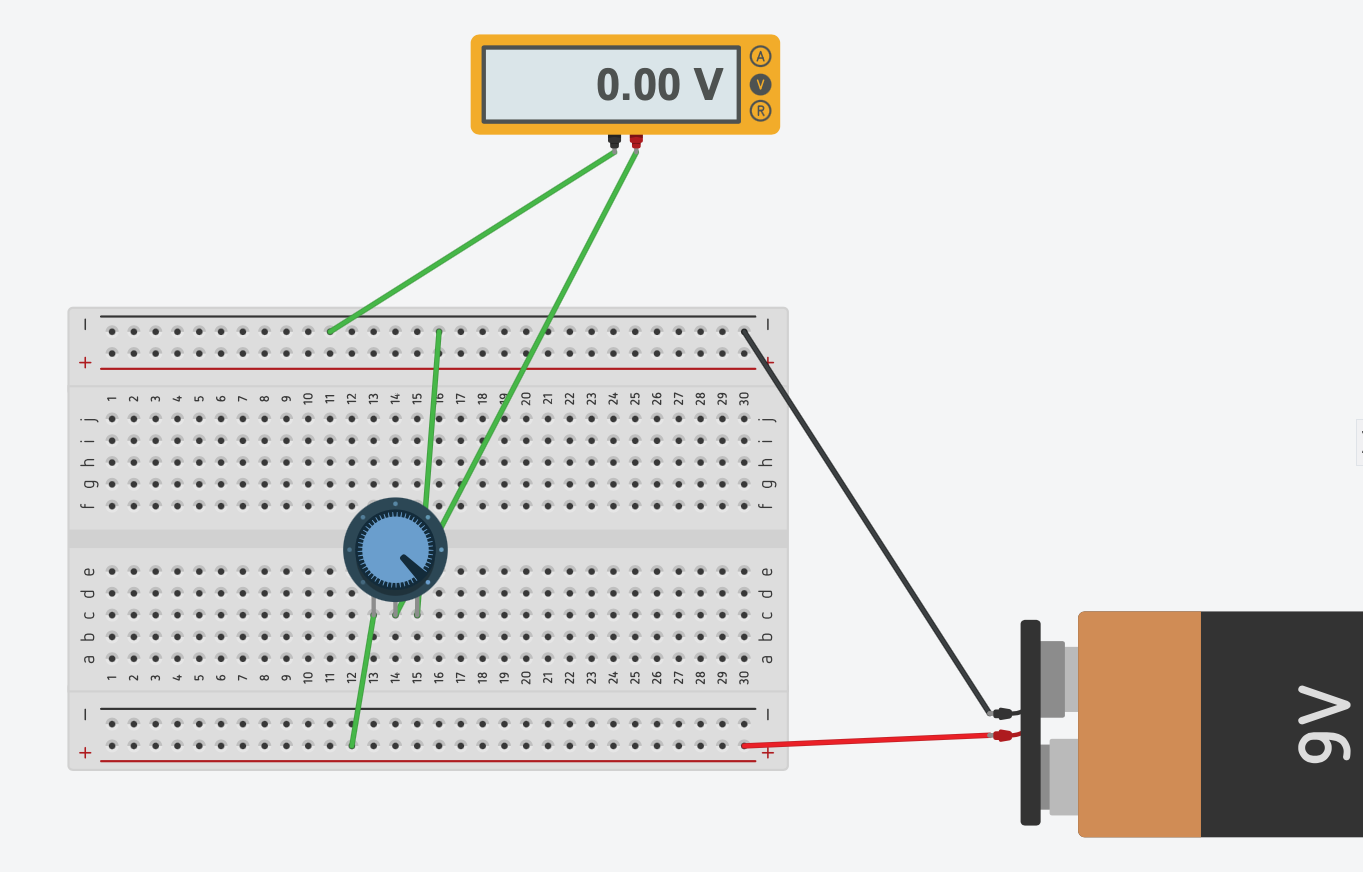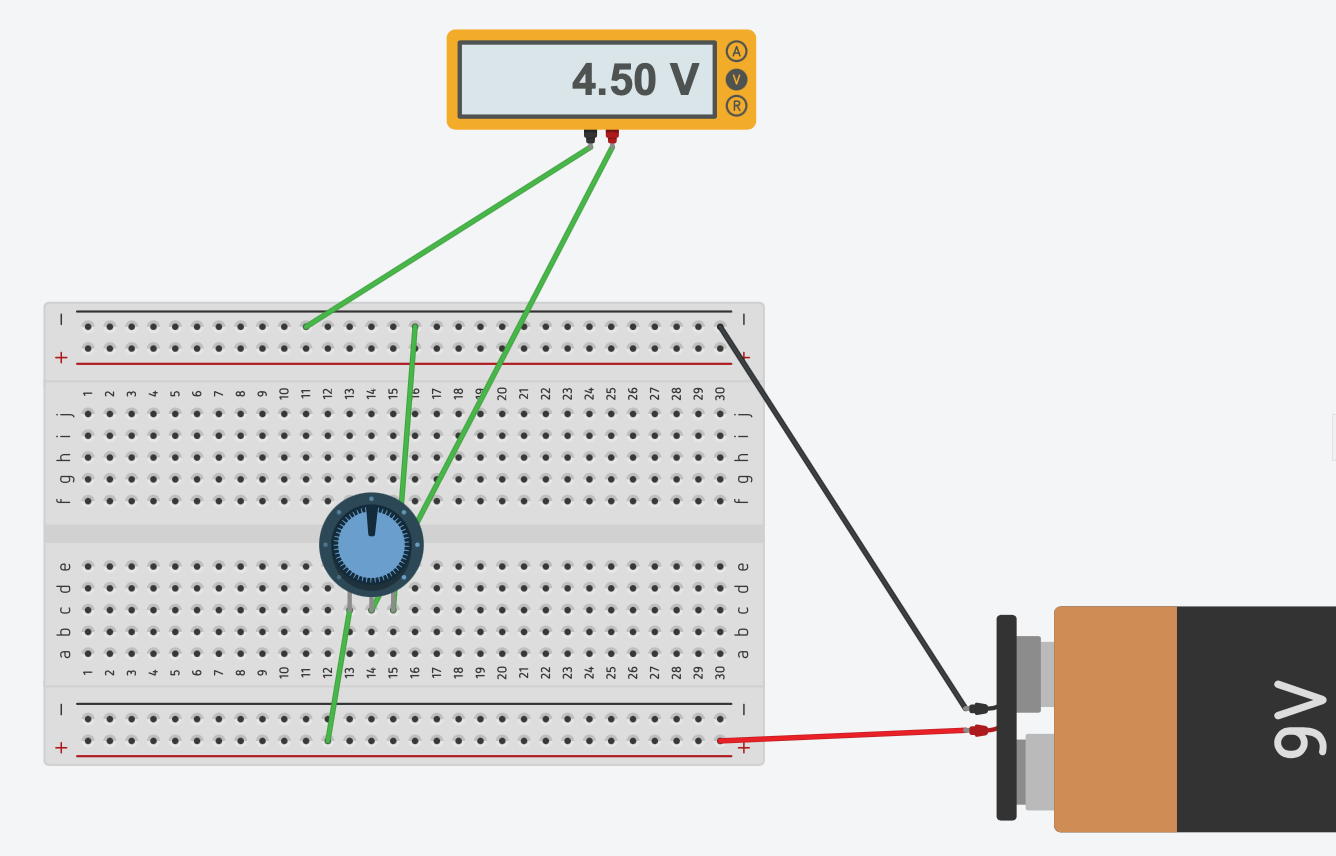Electronic components: Potentiometers
A potentiometer is a tiny component that has 3 connectors: 2 on one side, 1 on the other side:


The two connectors are the input, they are connected to the negative and to the positive, and the opposite one is the output.
Rotating potentiometer we can have on output a fraction of the voltage difference we have in the input pins.
This is because the potentiometer is a resistor we can modify the resistance of. In this case I have a 10kΩ potentiometer:

See this simulation: if we have the potentiometer at full left (counterclockwise), on the output pin we have a 9V difference between the output pin and ground, because the potentiometer is working at 100% as a 10kΩ resistance and absorbs all the current:

If we change the potentiometer value at full right, on the output pin we have 9V because the potentiometer does not absorb any current. It works like a wire, applying 0 resistance.

Having the potentiometer at 50% gives 1/2 of the starting tension in the output pin:

Potentiometer are handy for many reasons, on their own, but they are also used in integrated circuits to help us regulate the output, like in this case with a sound sensor where the potentiometer is the blue box we can regulate with a screwdriver:

download all my books for free
- javascript handbook
- typescript handbook
- css handbook
- node.js handbook
- astro handbook
- html handbook
- next.js pages router handbook
- alpine.js handbook
- htmx handbook
- react handbook
- sql handbook
- git cheat sheet
- laravel handbook
- express handbook
- swift handbook
- go handbook
- php handbook
- python handbook
- cli handbook
- c handbook
subscribe to my newsletter to get them
Terms: by subscribing to the newsletter you agree the following terms and conditions and privacy policy. The aim of the newsletter is to keep you up to date about new tutorials, new book releases or courses organized by Flavio. If you wish to unsubscribe from the newsletter, you can click the unsubscribe link that's present at the bottom of each email, anytime. I will not communicate/spread/publish or otherwise give away your address. Your email address is the only personal information collected, and it's only collected for the primary purpose of keeping you informed through the newsletter. It's stored in a secure server based in the EU. You can contact Flavio by emailing flavio@flaviocopes.com. These terms and conditions are governed by the laws in force in Italy and you unconditionally submit to the jurisdiction of the courts of Italy.